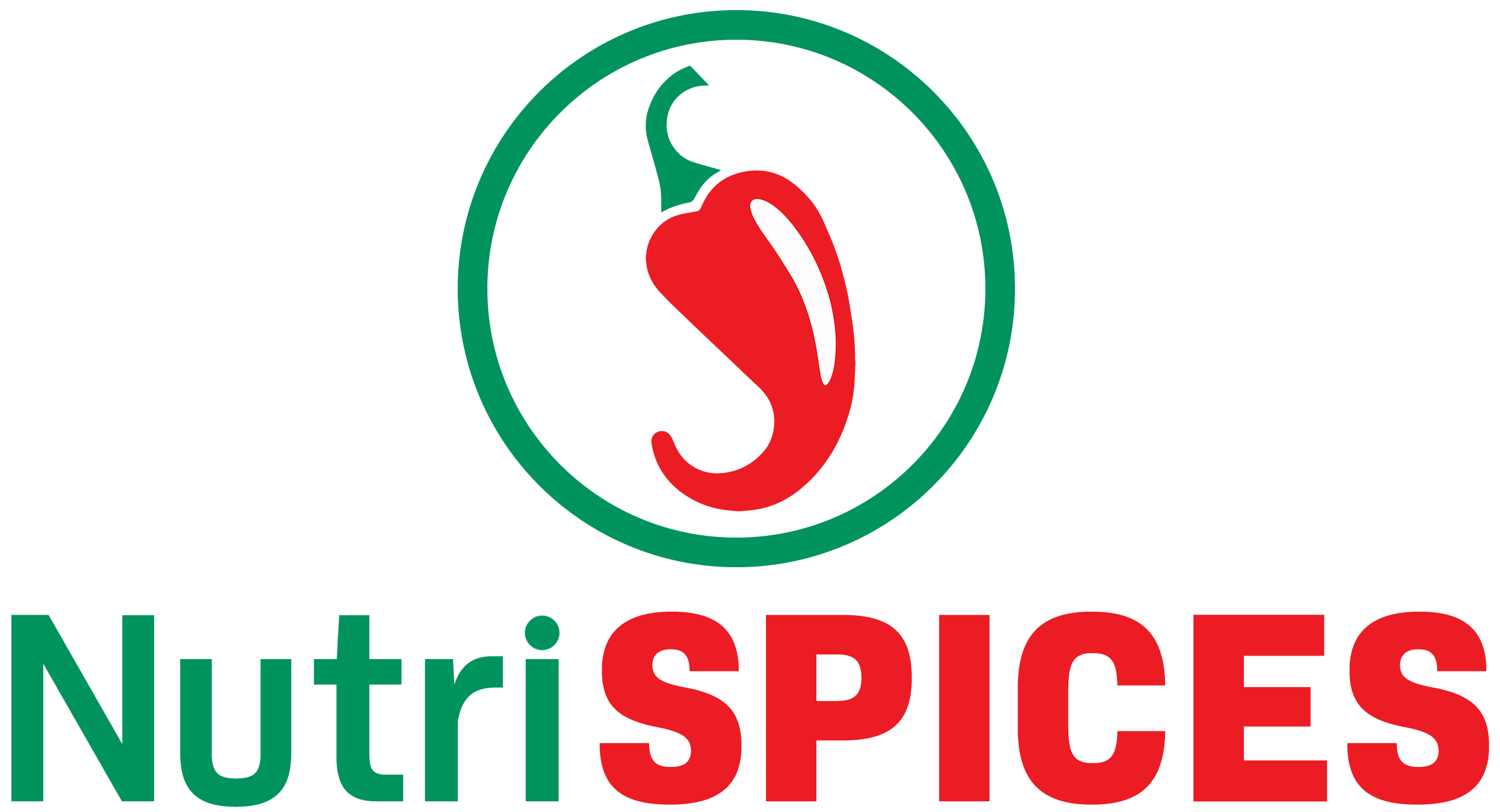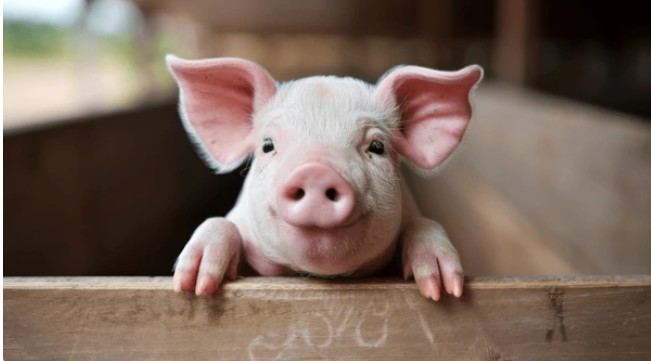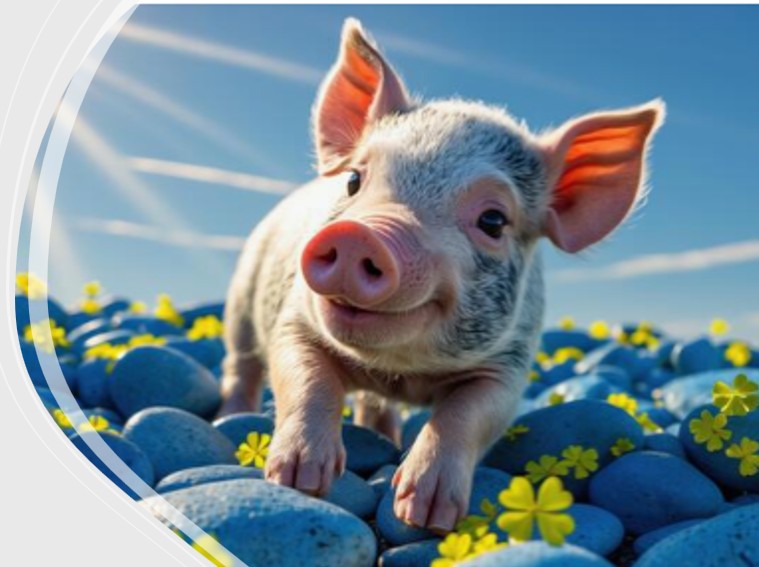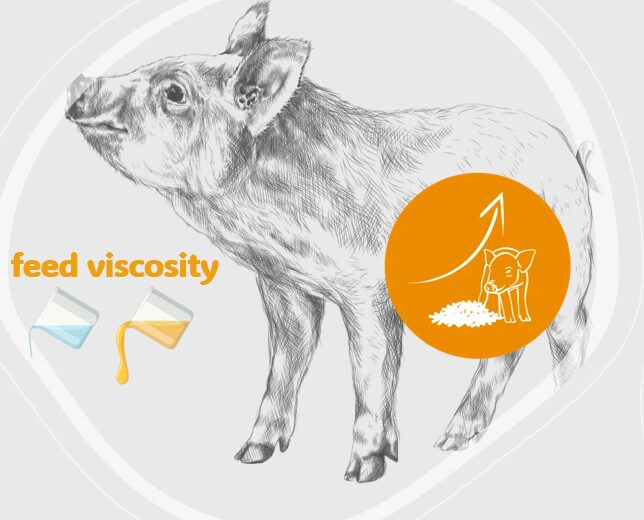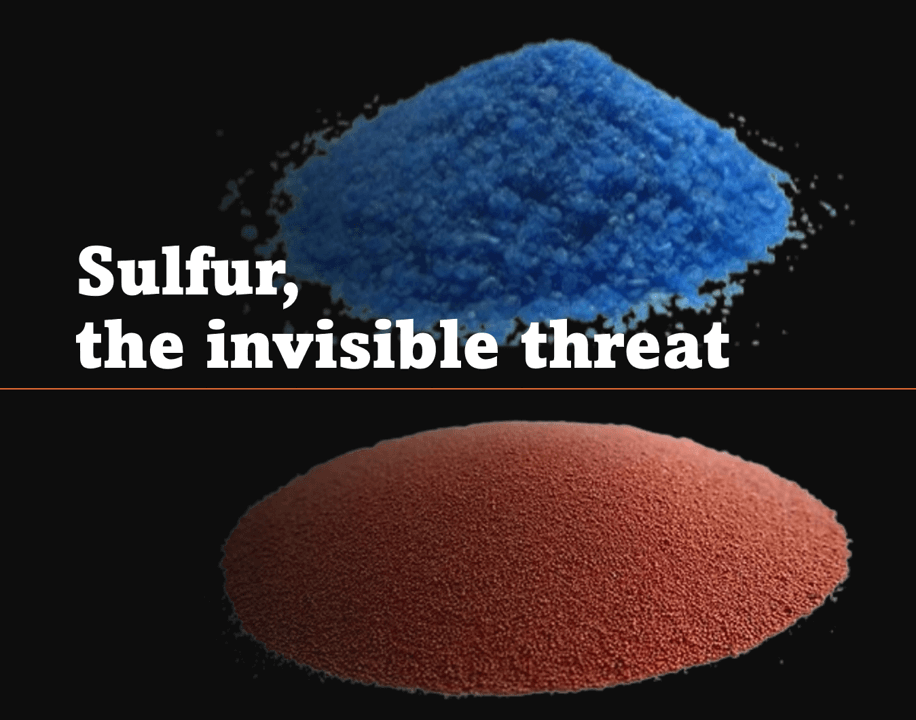
In animal nutrition, fibers are defined as the portion of dietary polysaccharides that cannot be digested by the enzymes of the small intestine. Instead, these complex carbohydrates either pass to the colon where they are fermented by the microbiota, or they remain unfermented and are excreted in the feces. This distinction gives rise to two important fractions: fermentable fibers, which produce beneficial short-chain fatty acids during fermentation, and non-fermentable fibers, which provide bulk and mechanical stimulation along the digestive tract.
The challenge in Asia is that diets are heavily based on rice, corn and soybean meal, which provide too little insoluble fibre. As a result, diets are fibre-deficient and unbalanced. In Thailand and Vietnam, where corn–soy-based diets dominate, the total dietary fiber level is typically 2–3% crude fiber (CF) and 6–10% neutral detergent fiber (NDF). By the time digestible nutrients are absorbed in the small intestine, fiber becomes the dominant fraction in the distal gut, often more than 60% of the remaining dry matter. This means that, even if fiber represents a modest proportion of the diet at intake, it is the dominant fraction by the time digesta reaches the hindgut. Despite this central role, the use of fiber in monogastric nutrition remains poorly understood, and misconceptions continue to circulate.
How fibers act in the gut
The action of dietary fibers in pigs and poultry is first and foremost mechanical. Unlike starches and proteins that dissolve and disappear during digestion, fibers remain as solid particles in the intestinal contents. This solid phase exerts physical pressure against the intestinal wall, stimulating peristalsis, the rhythmic contractions that move digesta forward. Without fibers, the intestinal contents would be mostly liquid, and peristalsis would be severely impaired.
Fibers also act as a scraping agent. They help to remove excess mucus and reduce bacterial adhesion on the intestinal lining, maintaining a cleaner mucosa and more efficient nutrient absorption. At the same time, fibers provide a substrate for the microbiota in the distal gut, encouraging fermentation and the production of beneficial metabolites such as butyrate, which supports colon health.
One could imagine replacing fibers with other insoluble particles, like sand, to stimulate peristalsis. In theory, this would create some mechanical stimulation, but in practice sand is too fine and too abrasive, leading to tissue damage rather than gentle scraping. Fibers, with their plant-derived structure, offer the right balance of solidity, texture, and water retention to perform this role effectively.
How much fiber do animals need?
Different animal categories require different levels of dietary fiber. Historically, nutritionists have relied on Crude Fiber (CF) as a measure, but this method underestimates the true fiber content. Today, Neutral Detergent Fiber (NDF) is the preferred metric, as it provides a more accurate representation of the total fibrous fraction. Please find below the level of CF / NDF recommended by INRA
- Piglets (weaning <20 kg): CF 2.5–3% / NDF 8–12%; faster gut maturation; drier, more consistent feces; fewer post-weaning diarrhoeas.
- Grower pigs (20–60 kg): CF 3.5–4.5% / NDF 10–16% → steadier transit, better villus integrity, more consistent growth.
- Finisher pigs (60–120 kg): CF 5–5.5% / NDF 10–16%; prevents constipation, lowers stress behaviours, improves carcass uniformity. Sows – Gestation: CF 6.5–7% / NDF 20–22%; satiety in restricted diets; calmer sows, less constipation, smoother farrowing.
- Sows – Lactation: CF 5.5–6% / NDF 13–18%; preserves feed intake, keeps transit regular, supports milk yield and body condition without excess bulk.
- Broilers – Starter (0–10 d): CF 2.5–3.5% / NDF 6–8%; avoids excess bulk; promotes gut development.
- Broilers – Grower (10–24 d): CF 3.5–4.5% / NDF 8–10%; stimulates gizzard, improves digestion.
- Broilers – Finisher (>24 d): CF 4.5–4.5% / NDF 10–12%; stronger gizzard, improved digestion, drier litter.
Layers: CF 4–6% / NDF 10–14%; better satiety and calmness; stronger eggshells and persistency of lay. - Ducks (all stages): CF 5–7% / NDF 12–16%; higher fibre tolerance; helps manage fat deposition while maintaining gut health.
These values highlight that fiber is not just an accessory nutrient, but an essential component of balanced monogastric diets. Across all species, current diets in Thailand and Vietnam fall 3–5 points below these NDF targets, especially in energy dense diets for piglets, broilers, and lactating sows. The fiber shortage can be even more important when using broken rice which is very poor in fiber.
How to increase NDF level?
Reaching these fiber targets with standard ingredients is challenging. The table below is illustrating the fiber content of main ingredients used in Asia with their portion of non-fermentable fiber. These values represent average ranges frequently reported in publications and feed tables for Asian ingredients; however, fibre composition varies widely with origin, processing and storage, and should always be confirmed by laboratory analysis of specific raw material batches before use in formulation. Nutrispices offers analytical services if you would like to learn more about the fibre profile of your ingredients. Do not hesitate to contact me and send you your samples for analysis.
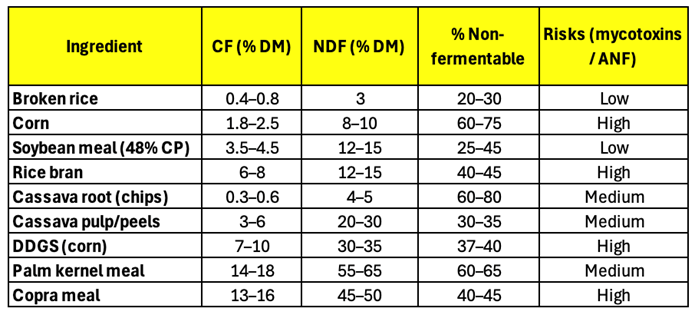
This shows why relying solely on local raw materials to hit fibre targets is impractical. Major ingredients like corn, SBM, broken rice are relatively poor in fiber, especially in insoluble / non-fermentable fibers. To reach fiber targets counting on rice bran, DDGS, palm kernel or copra meal, inclusion levels would have to be so high that energy, protein, and mycotoxins safety would be compromised. This is neither practical nor economical.
Moreover, it is important to control the balance between the fermentable and non-fermentable sources of fibers. An optimal balance is at least 50% insoluble fibre of total fiber content, otherwise diets become too fermentable, leading to wet feces, poor satiety and lower feed intake especially hot climates. The main ingredients like SBM and broken rice brings mostly some soluble and fermentable fibers and when we are looking at complementing diets in fiber, nutritionist should mainly focus on supplying concentrated source of insoluble fibers
Not all fibers are created equal. Among concentrated sources, lignocellulose has gained attention for its predictable and effective action. Firstly, lignocellulose contains mostly insoluble fibers (95%) and can help to improve the balance insoluble / soluble in the diet. For an optimal effect, two other parameters must be considered: particle size and water-holding capacity (WHC).
Particle size
It is important to distinguish between two particle sizes. The primary particle size is set by the manufacturer through micronisation to achieve the physiological effect. Because this fine powder is too light to transport efficiently, fibres are pelleted and crumbled, which is what customers see in the bag. These crumbles can be added directly to the mixer or reground if needed. Once the feed pellet reaches the stomach, they disintegrate and release the primary particles. It is this effective size in the gut that drives peristalsis, mucus control, satiety and gut health.
For optimal transit, the effective lignocellulose particle size should be around 200–300 µm for piglets and 500 µm for adult pigs. In poultry, larger particles (300–800 µm, average 600 µm) are required to stimulate the gizzard. Further along the intestine, smaller fragments (<100 µm) become useful by retaining water and slightly increasing fermentability in the colon.
The best lignocellulose sources are those that disintegrate progressively: remaining coarse enough in the proximal gut to stimulate peristalsis and gizzard function, then gradually releasing finer particles that enhance water retention in the hindgut. By contrast, fibres that collapse too quickly into <100 µm dust lose their mechanical action too early, providing little benefit for transit activation, scraping, or gizzard development.
Water-holding capacity
WHC reflects the ability of fibre to retain water by capillarity and create volume in the gut. It is closely linked to surface area and therefore particle size: as fibres disintegrate into smaller fragments, their WHC increases.
A progressive increase in WHC is an advantage. In the proximal intestine, enzymes remain concentrated for efficient digestion. In the distal intestine, the gradual release of finer particles increases water retention exactly where it is needed, before the colon, to secure hydration, colon health, and fecal consistency.
When fibres hold too much water too early, the digesta becomes diluted, enzyme activity is reduced, and nutrient utilisation is compromised.
Fibers are not an inert filler but a dynamic component of swine and poultry diets. They regulate transit, protect the mucosa, feed the microbiota, and promote animal well-being. While basal diets provide some fiber, the fraction that is often missing is the non-fermentable, insoluble portion. Concentrated sources such as lignocellulose, when used at the right level and particle size, bring predictability and consistency to diet formulation.
Understanding the science of fibers helps nutritionists move beyond misconceptions and use this essential nutrient strategically, improving both gut health and overall production efficiency.
David Serene
Nutrispices Director
